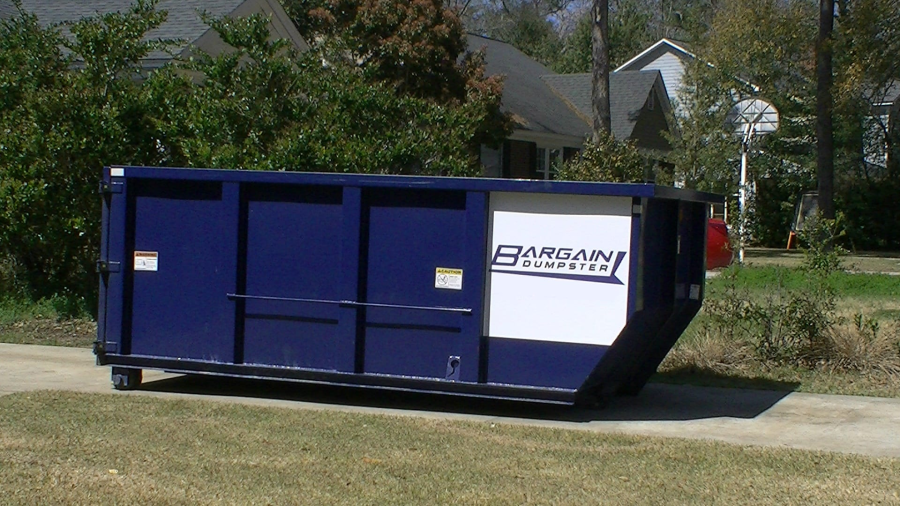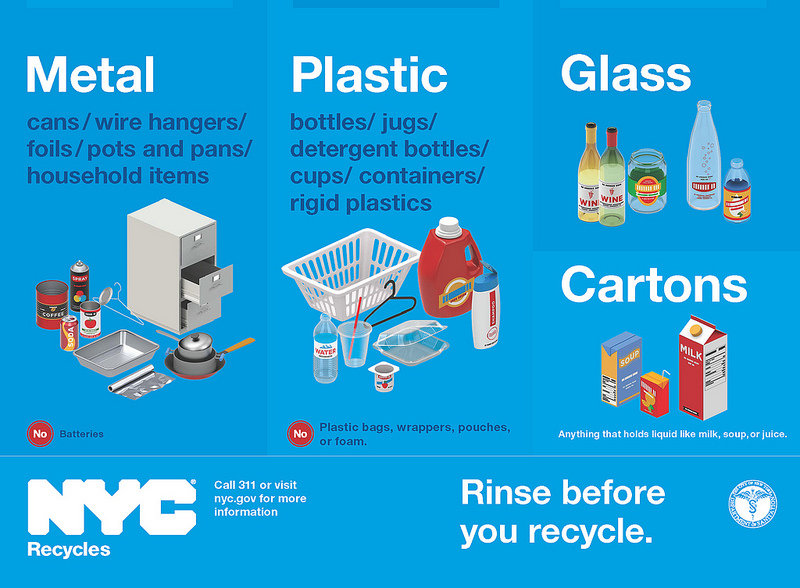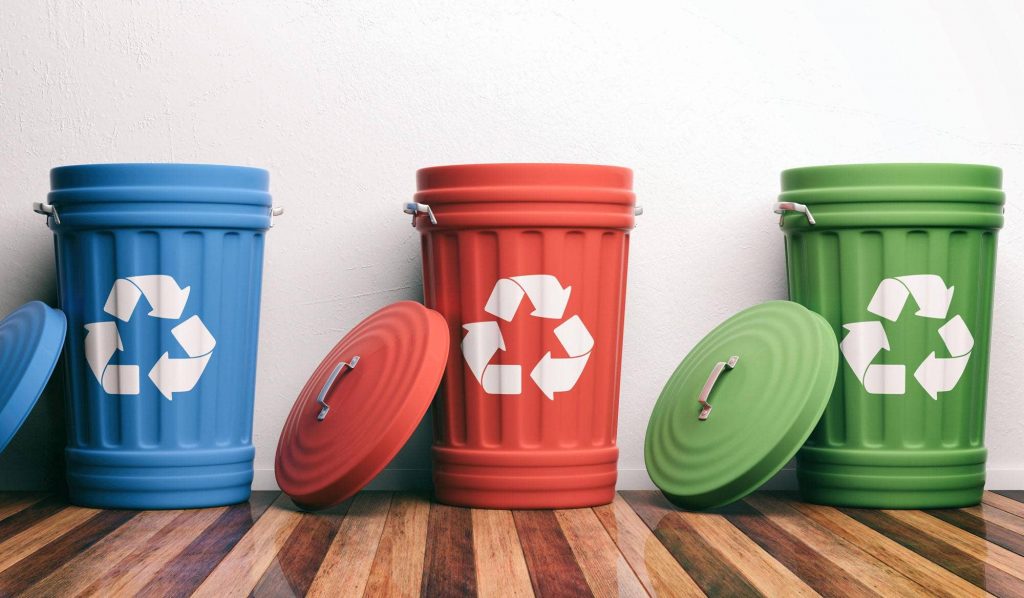
The most recent developments in recycling technology




So that the worst dystopias and cyberpunk atmospheres do not become a reality, ecology must be placed at the heart of high-tech. Green-washing, based on shells recycled from devices containing mercury, lead, cadmium and other substances that we advise you not to eat through a straw, may not be enough. But then, what to do?
No more abundance, it seems time is for sobriety. Once the announcement effects and declarations of intent have passed, we must question our uses and think better about our electronic equipment, both for ecological and economic reasons, in Texas and elsewhere.
To do this, let’s start by knocking down an open door: the most environmentally friendly material is the one that is not produced. Once a gadget lands in the hands of a user, its ecological footprint can no longer be counted in negligible quantities.
However, these gadgets provide excellent services, we can therefore legitimately question the durability of their products before considering them obsolete. And if the primary use no longer satisfies you, is it possible to find another use for them? Finally, there is the question of resale for a second life or proper recycling.
Embodied or embodied energy is the sum of the energies necessary for the product during its entire life cycle. This goes from the extraction of raw materials, manufacturing, packaging, distribution, transport, sale, use, maintenance and recycling.
A parameter that must be kept in mind when buying, for example, this microphone in which the youngest of the family will have vaguely sneezed three times before it ends up in a recycling bin. Does this experience feel like lived experience? This is normal, but we are consumers who should not be stigmatized in any way. Raising awareness and supporting this transition proves to be much more constructive.
Embodied energy therefore already has a heavy ecological impact in itself, but there is no question of putting it solely on the shoulders of the end customer. Let’s put aside planned obsolescence, known to all, to focus on the subject of device updates. This is a particularly notable fact for Android smartphones whose manufacturers do not fail to offer us a host of models each year, but are less valiant in software monitoring.
While Android 14 has been available in final version for several months, only 13.3% of terminals are on Android 13, 27% on Android 12 and still almost a quarter on Android 11. Dispersion is much less important at Apple, but the company is the only one to offer terminals with iOS.
We can also blame all market players for the temptation of entry-level equipment. When it comes to computers or small electronic devices, being inexpensive requires cutting back on power, quality of materials and/or services. It still happens too often that memory and/or storage are soldered to the motherboard, preventing any future development.
These devices, which are impractical or show signs of fatigue too quickly, are then quickly discarded. Obsolescence is not planned here, it is almost consented to and fueled by sophisms such as “in two years it will no longer be worth anything”, “these things never work for long”, “for the little that I’m going to use it”, etc.
Of course, not everyone has the means to buy new high-end products, which is why it is important to consider repairs, the second-hand market, etc. Manufacturers offering low-end products en masse are much more reprehensible.
Far be it from us to resort to catastrophism, on the contrary. Trends are beginning to emerge in terms of recycling and life extension. Green IT, for example, consists of imagining sustainable and eco-responsible IT across all links in the chain. This ranges from eco-design, which consists of optimizing environmental or social performance during the development of a product, to responsible use of our technologies. Recycling is part of this, but it also covers, for example, organizing a video conference rather than moving entire teams.
The public authorities have also taken up the subject with laws proposing in particular indices of repairability and durability, the provision of spare parts for at least five years, more transparency on waste management, followed by a host of measures to reduce the environmental footprint of digital technology.
Let’s keep our “old” products. Let’s admit it, it is impossible to part with our PCs and/or other mobile devices since, already, it would be difficult to consult Next INpact calmly. In terms of technology, the question is therefore not to go back, but to move forward differently.
We return to our uses and the way in which we can reduce our impact on the environment. A drop of water in the ocean? Far from it, in terms of ecology there are no small savings, because if your carbon weight loss treatment seems negligible it is part of a necessary societal change. Let’s start by kicking off the good old Moore’s “law”, adapted several times to finally evoke something that doubles every 18 months.
Our computers have long been obsolete within the first six months of purchase, but many users still say that these devices are destined to be scrapped after two or three years. As for laptops, it is customary to explain that a battery can perform 3,000 charge cycles and therefore last three to five years depending on use. The veracity of this information does not matter, a battery must simply be able to be changed and at a reasonable price. Requiring the production of spare parts for at least five years is therefore going in the right direction.
And this also applies to the mobile market, which users keep on average between 23 and 37 months while the mechanical lifespan of these devices is around seven at ten years provided that the battery can be changed. Unfortunately the software part will not follow… There is still a way to go. The second life of our equipment must also be taken into account ecologically.
If you have the skills, switching an old PC to Linux to avoid leaving it prey to viruses on non-updated Windows is a good way to extend its lifespan. The second-hand and reconditioned market is also experiencing strong expansion, whether on sites such as Back Market, Afbshop, Rakuten, joined by large well-established brands.
We must obviously not forget organizations which, in addition to ensuring a second life for our devices, strives to reduce the digital divide. Linux distributions have even specialized in this market. Do not hesitate to contact local associations or participate in install parties to get advice and help on site. However, pay attention to another point: electricity consumption. Recent processors and GPUs often display a much better performance/consumption ratio than previous generations. If your old equipment has no other hope than ending up in the dumpster, then you must ensure it is recycled.

Bargain Dumpster has worked hard to provide the most affordable dumpster rental solutions possible in the USA for everyone. The cost of a dumpster rental should not prevent anyone from taking advantage of the usefulness and convenience that dumpster rentals provide for projects.
Bargain dumpsters are used by many people because they help them solve their junk disposal problems. Whoever needs to clear clutter from their house, office or storage unit, can easily find what they need in a bargain dumpster rental. They are flexible and can be arranged according to your needs. You can ask for a dumpster for a week or a month according to your garbage disposal needs. This is one of the reason for the Bargain Dumpster success story.
Bargain dumspters can be a very reliable means of moving and getting rid of your junk when you are in a pinch. If you need to get rid of some items and don’t have any more room in your apartment, you can always call up a bargain dumspter and they’ll be happy to come and get the items you want to give away and will pay you for them instantly. What’s better than that?
The best part is that you’re helping to reduce your impact on the environment, as the garbage will be taken to a recycling center, where it will be recycled in the most environmentally friendly way.
Bargain dumpsters are always at affordable prices in any local market in the USA. You can find them in the top rated listings in the market. They have enough experience in offering the best services in the waste management. When you choose or hire them you will get a free estimate of the waste removal services which they offer. You can choose the best options that are affordable and also customized to fit your needs. The dumpsters are always placed according to the need of the users. You can have enough space for your home or business and you can choose the size of the dumpster when ordering the services.
Bargain Dumpster are always pleased when they can provide more use out of their dumpsters without fail. Dumpster rentals are able to serve businesses for a long time before needing a replacement. Even if a dumpster is only used for a couple of years, it still is more cost efficient than buying a new one every six months. Check out a local branch to see what they have to offer.
With this company Bargain Dumpster, you will have a positive experience overall. If you require a house cleaning service and are unfamiliar with the process, they are quite helpful and will assist you in specifying the dumpster size for the cleaning service you require. Those looking for a budget dumpster would do well to consider Bargain Dumpster. They would drop that off on time and remove it fairly.
The employees at Bargain Dumpster are extremely friendly and helpful. Everything was sorted out in a matter of a few hours. It would be a fantastic option for those who require dumpsters to remove junk from their homes.
A professional service from Bargain Dumpster continue to be provided, and the company can be relied upon to be present when it is needed most.
They will assist you in getting rid of any unwanted scrap items from your backyard or garden. They will thoroughly clean the area, and the price for their services is very reasonable.
Various dumpster sizes are available from such a good discount dumpster rental company. They will also assist you in locating the most appropriate dumpsters for your waste disposal needs. They can also assist you in getting rid of construction and manufacturing waste or food waste discarded by restaurants.
Excellent customer service! They will make the entire rental process simple no matter how tedious it is. From assisting people in determining what size dumpsters they required to the truck calling ahead, everything will be excellent with them. The driver will always be courteous and helpful in advising people on the best location for dropping the dumpster.
If you require a dumpster for a household clean out task at the last minute, they can accommodate you. They are willing to supply it in situations when their ompetitors are not. Their service quality is excellent, and they will assist users in a variety of ways to resolve their waste management and recycling problems. No matter how last-minute the order is, they will not make up for it in terms of customer service.

Since the New York plan for waste management did not meet its objectives, a revision was necessary 3 years after the publication of the state decree.
Three points are taken into account in the revision of the plan:
1) List of solutions adopted for waste disposal packaging and an indication of the various measures to be taken so that the national objectives concerning the recovery of packaging waste and the recycling of packaging materials are respected as of June 30, 2022
2) The determination for the various categories of waste taken into account in the plan, the proportions of waste which must be five years later, on the one hand, and at the end of ten years, on the other hand, either valued by reuse, recycling, obtaining reusable materials or energy, or incinerated without energy recovery or destroyed by any other means not leading to
recovery, or stored.This leads to establishing the balance sheets for the 2025 and 2030 horizons.
3) The list, taking into account the priorities selected, the facilities that will be necessary to create in order to achieve the objectives defined above, their recommended location, in particular as regards the centers of storage of final waste from the treatment of household waste and assimilated.
The circular from the Ministry of Regional Planning and the Environment relating to the implementation and the evolution of local plans reflects the strong desire to influence departmental plans, without as much to challenge the objectives of the law, in the sense of improving the recycling of materials and recovery of organic matter.
The circular which wants to reframe the task thus provides details on:
It is necessary to make a clear distinction between the waste collected in the within the scope of the public disposal service (household waste, bulky
households, sewage sludge, green waste) and those collected outside the public service (ordinary industrial waste, inert building materials, etc.).
This differentiation should make it possible to better reason the sizing of equipment and their financing. As the waste management specialists at Rochester dumpster rental companies have mentioned, waste disposal and recycling are complex issues.
As a corollary of the federal law on waste management protocols, the principle of the circular is to establish a hierarchy between processing modes:
The collection targets for recycling, composting or spreading
The objectives that I retain at the national level are, ultimately, half of the production of waste whose disposal is the responsibility of local communities is collected to recover materials for their reuse, recycling, biological treatment or spreading agricultural.
The 50% apply to the entire deposit at the expense of communities: household waste, bulky waste and station sludge of purification evaluated as raw materials.

Titled ‘Bag it or bin it? Managing London’s domestic food waste’ this new report join similar calls for London to step up it’s food waste processes, and explores a number of strategies and methods for keeping the capital’s food waste away from landfill.
A big task for the report was to find strategies which allowed for a manageable cost, whilst also making food recycling more accessible and easy to understand for residents, businesses and local authorities.
“In contrast to the now well established collection of ‘dry’ recyclables such as paper, metal, plastic and glass, the separate collection of food waste remains comparatively rare in London, with fewer than half of all households receiving a food waste collection service,” commented Stephen Knight, chair of the London Assembly Environment Committee .
“At the same time London is struggling to meet its recycling targets while landfill capacity is fast running out. The case for improving the collection of food waste is therefore compelling,” he continued.
The report called on the Mayor to help secure Government resources for separate collections and to do more to support schemes like the Waste and Resources Action Programme (WRAP) and Recycle for London.
It also said that the Mayor must ensure that the London Waste and Recycling Board (LWARB) can continue its programmes to support boroughs in the long term.
“At 34%, the capital has one of the lowest household recycling rates in England and rates for inner London are even lower, at just 16%,” noted Knight.
“When we take a closer look at how London’s boroughs are performing we are seeing a concerning lack of consistency, with 10 boroughs still not collecting any household food waste at all.”
“We realise that cost is a major factor when local authorities’ make recycling choices, but separate food waste collection schemes need not be more expensive. Effective food waste collection will reduce the amount of waste generated in the first place, potentially making the service cost-neutral,” concluded Knight.
Liz Goodwin, chief executive of WRAP, took to the stage at a waste and resources conference in Dubai to underline the importance of food recycling this week.
A new report from the London Assembly Environment Committee has called for an immediate refocus on the capital’s food waste management efforts as landfill space is starting to run out.
Head of the Waste Resources Action Programme, Goodwin delivered a number of new figures and statistics that underline the need for every nation to look into how they handle food waste.
The International Forum on Sustainable Lifestyles was United Nations Environment Programme (UNEP) and aimed to encourage a more global conversation on the subject after the UNEP-led ‘Think Eat Save’ campaign launched last year.
Goodwin said, “An area the size of Wales would be needed to grow all of the food we throw away from our homes each year in the UK. That’s about a quarter of the size of the United Arab Emirates.
WRAP estimated that two million tonnes of waste could be saved by 2025 in the UK alone.
“WRAP’s expertise of UK food waste prevention is being utilised internationally,” she said. “Through the ‘Think Eat Save’ campaign, WRAP is helping UNEP initiate the set-up and delivery of a South African pilot.”
Goodwin encouraged delegates to consider the difference that this wasted food could make to the world’s impoverished, citing, ”One in three food items going to waste.
It’s a dreadful amount, whichever way you look at it and it’s crazy that we collectively allow it happen. But that’s the reality.”
“It equals 1.3 billion tons of food.” continued Goodwin, “It’s a hard figure to visualise. You get a better idea when I tell you that it’s enough to feed all that are hungry in the world. Not just once. But four times over.”
A new report on the state of waste collections in London has put the spotlight on food recycling this week, as it was revealed that of London’s 33 boroughs, just 23 offer separate food waste collections.
Titled ‘Bag It or Bin It: Managing London’s domestic food waste’ revealed that only two thirds of the UK capital offer separate food waste collections, despite numerous pilot schemes, awards and incentives for the normally progressive city.
The report also highlighted that flats are the exception to the rule for many boroughs, with 16 local authorities skipping flats even when they do offer food waste.
Chair of the London Assembly Environment Committee, Stephen Knight, said; “At 34%, the capital has one of the lowest household recycling rates in England and rates for inner London are even lower, at just 16%. When we take a closer look at how London’s boroughs are performing we are seeing a concerning lack of consistency, with 10 boroughs still not collecting any household food waste at all.”
London is pushing a number of post-consumer food waste schemes, where even after collection food waste is being sorted so that it can fuel anaerobic digesters rather than being shipped to landfill.
Initiatives like FoodCycle also step in to the waste stream, reclaiming food waste and making food for high food-poverty areas.
Suggestions on improving the recycling rate in London include:
Whilst the debate on food recycling seems to be chugging a long at a steady pace, with more and more local authorities see the benefits of proper food waste management, in addition to central government.
However, the next battleground already seems to be in sight – and that’s what comes next for food waste packaging.
With zero waste to landfill as the goal, food waste packaging is the unwanted defender in the way. Often unsuitable for ‘regular’ recycling after being in contact with food, the packaging for products has to go in general waste.
Likewise, for areas with regular food waste collections, these containers aren’t always biodegradable, so would be unsuitable to go in food and garden waste, too.
Oxford City Council is one such local authority currently grappling with what to do when it comes to recycling food waste packaging. Council members are toying with nipping the issue in the bud in some senses, by voting on a proposal that will require street food traders to use only biodegradable or recyclable packaging and utensils.
A spokesman for Oxford City Council said: “The council’s general purposes licensing committee approved a proposed condition for food traders which requires all packaging and utensils for use by customers to be made of biodegradable or recyclable materials.
The condition is intended to reduce the amount of commercial waste that goes to landfill.

Windshields are an essential but often overlooked security function of automobiles.
The windshield glass is produced to resist higher winds, rain, and may deflect some solid objects without being damaged. Sometimes there are accidents where the integrity of the glass is compromised. Many people have minor windshield issues, which impact their ability to drive.
Damage to business or individual automobiles usually occurs from rocks, products falling from other automobiles, or vandalism. Waiting around a prolonged period of time to repair the damage might have additional negative consequences. The content of the car might be better noticed as useful to possible robbers seeking an easy opportunity.
Vehicle alarms might not work correctly when the window is not intact.
Automobiles parked in higher traffic areas might lose their DVD players, screens, movies, GPS, money, or any other useful products within the vehicle. Hence many car owners use car covers, which can protect both their windshield and reduce the risk of theft.
Cracked windshields in a few instances are still stable. The crack or small hole might seem to not be relocating. Short-term options such as tape or cardboard may cause hazardous accidents. A small crack that is not fixed in a timely manner might result in needing to replace the whole windshield later on.
Many insurance coverage businesses pays all the windshield fixing work. Some policies might need some out of pocket charge. Many automobile insurance policies are available on-line. On-line chat support or phone consumer service agents should be in a position to solution particular concerns regarding reimbursement.
A windshield can usually be fixed quickly. There’s no requirement to remain without the vehicle for any prolonged period of time. Get in touch with a windshield fix professional to ask details and get an appointment.
Professionals can use their expertise to verify if it is secure to drive out to their place. Some businesses will come to a house or business place within the city. Callers which are outdoors of their service area might incur additional charges for travel expenses.
People love traveling by car, but rental cars might be damaged by robbers attempting to steal them. Staying out late nights at clubs or bars should only be done in secure areas. Unattended parking lots are frequently the place where vandalism occurs.
Most rental car businesses pays for the windshield fix services, through reimbursement. Usually call their consumer service group for confirmation on what to do about it. If the rental car is damaged, do something quickly.
Take photos for insurance coverage reimbursements including in instances of vandalism. Usually make a police report regarding vandalism on business or individual property.
A car’s windshield is an important security device. It does not just safeguard from debris, but specially-made auto glass increases the strength of the front of the vehicle.
Sadly, in spite of the comparative strength of auto glass, damage can still happen; even the littlest stone flying with the air may cause a chip or a crack.
This really is a problem because any damage to the windshield, no matter how small it looks, minimizes the windshield’s strength and its ability to safeguard the vehicle’s occupants.
Whether or not the glass must be changed, or whether or not it can simply be fixed depends on the extent of the damage.
A little chip, which leads to no visibility problems, can usually be fixed. In this case, a fix technician will use specialist gear to suck all the air from the chip, and can then fill the damaged area having a quick-setting gel.
The gel requires as much as 30 minutes to completely dry, but sets in such a manner that the glass will be nearly as strong as though the damage had never occurred. A fast polish of the area will also assist in making sure that the driver’s vision is not impaired.
If the damage is too large (usually more than half an inch in diameter), or it is in such a place that the fix may obstruct the driver’s visibility, then a full windshield substitute will be essential.
A complete substitute can also turn out to be needed if any vibration in the car may cause the chip to develop into a full crack, or in cold climates where water will get into the chip, freeze into ice, and cause the glass to crack.
Prior to completing the windshield substitute, all products close to the glass have to be removed – this includes the wipers, mirror and anything connected to the inside of the glass, such as a GPS bracket. All vents have to be suitably sealed to make sure dust and debris can’t get into the engine or the radiator.
The rubber gasket, which assists to hold the auto glass in position and safeguard it from dirt and rain, must be removed as well. This really is achieved by cautiously cutting into one corner and then pealing the seal away in the rest of the windshield with a knife or screwdriver.
The glass is usually moved by applying pressure in the inside of the vehicle. If the windshield is already damaged, then additional cracks can develop at this point, which suggests the pressure to remove the glass should be even and gentle.
Following the removal of old windshield, the frame should be completely cleaned. The brand new gasket is then inserted into the frame and coated with sealant. Following this, the new glass is pushed into the gasket and extra sealant is wiped away.

The greatest and most precious resource to be found on planet earth is the abundance of water.
Water which is the building block of all cells, and without which there would be no life. Yet, as mankind has advanced we have been wilfully blind to the effects that our actions are having on water.
Everyone knows the dangers of radiation; so imagine if our water supplies were to become irradiated. We use storage tanks to hold dangerous liquids and gases underground to ensure they do not impact our lives.
Imagine if those tanks were to, not even break, but simply leak while remembering that just over 30% of fresh water is ground water.
Finally, think of the effects that acid rain has on buildings of stone that have stood for centuries. Then, think of the effects that that same acid rain is having on marine ecosystems around the world.
Two very simple words that should instil one with a sense of worry.
Radioactive wastes is defined by The Macmillan Dictionary as “The harmful waste that is produced while making nuclear energy.”
Everything that poses a danger to humanity on the scale that radiation does should be regulated, and in the United States radioactive waste is regulated by the Office of Nuclear Material Safety and Safeguards (NMSS).
The problem is that government regulations allow radioactive water to be released from power plants to the environment containing “permissible” levels of contamination.
However, since there is no safe threshold to exposure to radiation, permissible does not mean safe.”
According to River Keeper the Indian Point plant releases over 100 different types of isotopes, and in February 2000 an accident at the plant discharged 20,000 gallons of radioactive coolant.
That is bad enough, but the same month 200 gallons of irradiated water were released into the Hudson River.
Water, which is our most vital resource, is being exposed to radiation which has the potential to permanently degrade any cells that it comes into contact with.
The majority of radioactive waste water pollution originates from the European continent, and traces of that radiation have been found in waters over 2000 miles away from the European coasts.
That says the majority, not all. Remember Fukushima? That was a nuclear power plant in Japan that had a meltdown a back in 2011. Currently, a couple of years after the disaster, radiation from Fukushima is being detected in the waters of the West Coast of the U.S.A.
Radiation is one of the greatest dangers to mankind in existence, and we are allowing our waters to become poisoned by it.
Atmospheric deposition, which is more commonly known as acid rain, is a danger to both land and sea.
Acid rain is created when certain chemicals, such as sulfur and nitrogen, mix with rain clouds.
Acid rain then falls upon both the land and the sea. On land, it can cause damage to the environment, buildings, plant and animal life, and man. In the seas it can kill off marine life, and raises the acidity of the water.
The main cause of these chemicals entering the atmosphere and mixing with rain clouds is industry. As the acidity of oceans rises this can lead to many damaging effects.
The most obvious of these effects is the death of marine and plant life which cannot survive in acidic waters, but it also has the potential to lower the level of nutrients in the water.
Over time this will cause even more marine life deaths.
Acid rain’s effects on land are equally severe. It can erode man made structures, kill plant and animal life, and cause damage to humans as well.
Just from the name, acid rain, you know it is not a good thing. Atmospheric deposition has sources both natural and man made. Its natural sources are volcanoes and decaying vegetation.
Its man made sources are mainly emissions of sulfur dioxide, and nitrogen oxide. As it results naturally in nature it is difficult to combat acid rain.
However, as man has contributed to the frequency and intensity of acid rain, we have an imperative to minimize the damage that is caused to our land and waters.
Underground storage tanks are found in every community in the United States.
They are used to store dangerous and toxic chemicals and gases. Sadly, out of sight out of mind doesn’t mean they’re gone.
Storage tanks that were constructed before the year 1980 were made of steel. Steel is a metal which if exposed to the elements will rust.
Since 1989 in the state of Indiana over 4300 underground storage tanks have leaked.
That is just one state in one country, each state is different but they are all affected. The issue is not if waste removal in Florida is better than in Missouri, this is a national issue that should be tacked by the federal government.
Leaking tanks have the potential to contaminate not just the soil around them, but above ground drinking water sources, below ground drinking water sources, recreational water bodies, and they can also have an impact on property values.
Responsibility is not something that can be ignored. As these tanks are man made structures, then mankind is responsible for the damage that is caused by them.
While it is true that the sins of earlier generation should not be visited upon the living…they are. It is time for us to take responsibility and find a way to resolve the problems that have arisen with these leaking tanks.
It is said that progress cannot be stopped, and it is true that mankind has progressed greatly throughout the centuries.
While progress cannot be stopped, still the problems that arise from progress’ continuing march must be met. Acid rain, nuclear waste, and underground storage tanks are all either fully man made, or greatly exacerbated by man.
This being the case, it is up to mankind as a whole to find a way to deal with the difficulties that arise from them.
No one wishes to live in a dying wasteland, but if we do not work together to protect our most valuable resources, namely water and the environment, then we will find ourselves living in a world that none of us will enjoy.

There are dreams that disturb us, others that almost make us regret waking up. We fall, we fly away, we kiss a star, we see a deceased loved one, a snake or a spider appears …
Sometimes you wonder what this weird dream we just made means!
Dream interpretation experts can say a lot about the person who had the dreams, and shrinks have taken a close interest in deciphering certain symbols. Nightmare, erotic dream, or delirious dream, what should we see in it?
How to analyze this bizarre dream that comes up all the time? What does it reveal about your deepest desires?
If you had a daring dream, that does not mean that you have become obsessed with sex, of course not! Learn how to decipher an erotic dream.
I had an erotic dream, is it serious doctor?
From simple romances to the hottest scenarios, many of us have erotic dreams, dreams of sex, dreams of love … but few admit their existence.
And yet, they say a lot about us and especially about our sexuality! Immerse yourself in these dreamlike thoughts full of meaning and discover the meaning of erotic dreams.
Sleep is broken down into cycles of approximately 90 minutes, each comprising a phase of slow and paradoxical sleep. It is during the last part that dreams appear. Erotic reveries are an integral part of our intimacy, from an early age and especially during adolescence.
Puberty, conducive to the naughty dreams, is also closely related to the first emotional turmoil … It is then a learning of sexuality that will be perpetuated throughout adulthood.
As for the origin of erotic dreams, psychoanalysts are formal: erotic dreams do not happen by chance and are the fruit of desires experienced during the day.
For example, if a man had an effect on you during the day, you may dream of scorching hugs with him during your sleep.
What are these erotic dreams for?
Making love in a dream shows that the dreamer’s imagination is stimulated or, as Freud postulated, that she is able to form a desired scenario or even satisfy unconscious impulses.
A true object of liberation, the erotic dream therefore allows the individual to fulfill sexual needs that have escaped and thus, to thrive better in daily life.
Far from moral pressures, the dreamer can then deploy her libidinal energy and express all her sexual desires, even the most eccentric. Do you dream of being a man-eater when you make a point of staying true to reality?
Or do you have sex with your colleague on the photocopier when the latter intimidates you greatly? Never mind, in dreams, taboos, restraint and other blockages have no place!
Better yet, dreams of sex and love allow you to detect certain blockages, even to release them.
Thus, a young woman who is a little frigid but who nevertheless dreams incessantly of sexual relations with multiple orgasms could thus realize her discomfort and decide to consult a specialist to come to the end of her problem.
Certainly not!
These dreams are not the sign of disorders but on the contrary of a good mental health. Your dreams, if they are the expression of repressed carnal or sexual desires for which you are not responsible, should in no way be confused with reality.
So there is no need to feel guilty and imagine that you are suffering from some form of perversity.
It can be good, even beneficial, to question the meaning of erotic dreams in order to improve daily life, especially love life and sexuality.
First, psychoanalysts consider that the erotic dream takes two forms: that which involves a sexual act with penetration, which can then mean a lack in reality, with a libido which is not fully fulfilled; and the one that remains carnal (kisses, caresses), simply signifying general well-being.
For women as for men, certain universal symbols are imposed on us.
In the case of romantic encounters, the scenarios are quite similar from one person to another. Then there is the experience of each, their situation as a couple and their relationship to society more generally.
So it’s these additional details that allow for accurate interpretation and can make all the difference. Other symbols are universal, like fire, earth, water, day, night, trains …
On the analytical side, dreams involving a romantic encounter do not reflect the style of the person with whom the dreamer would like to materialize, but rather a hidden side of herself.
Thus, a person who dreams of his new boss with an assertive character and an eventful existence does not necessarily refer to a desire towards him, but to what he would like to be and to his life, which seems to him perhaps too boring to his taste.

Sleep is an extraordinary piece of machinery that researchers are just starting to understand.
If neuroscientists begin to reveal the secrets of our nights, they are still far from having unraveled all of dreams’ mysteries. Because the mechanics that punctuate our nocturnal rest are really complex.
Our sleep consists of several cycles of ninety minutes on average. If we do not go to sleep at the first signs of fatigue (yawning, heavy eyelids), we miss the first cycle and will have to wait for the next.
Like a traveler who stays on the platform until the next train. Each cycle is divided into several stages (light, deep, REM sleep) which have specific functions.
Ah! This delicious moment when we fall asleep.!
For a few minutes already, our thoughts have been appeased. Throughout the day, our brain activity gradually released molecules such as serotonin and adenosine that cause sleep. After a while, their accumulation makes us fall into the arms of Morpheus.
At the same time, the decrease in brightness signals to our internal clock, located in the hypothalamus, that it is time to go to bed. This signal lowers our internal temperature and triggers the secretion of melatonin. This hormone which will be produced throughout the night makes us want to sleep in an irrepressible way.
But beware! At this point, the slightest external stimulus – a slamming door or a ray of light – can still wake us up easily. If nothing disturbs us, our brain activity progressively decreases and our muscles relax. Breathing becomes calmer.
In a few minutes, we reach stage 1: it’s official, we sleep. Ten minutes later, we slip into stage 2, during which sleep is less light even if it remains fragile. The electrical waves emitted by the brain are a little slower still. The level of cortisol – the stress hormone – decreases. Heart rate and blood pressure drop. This phase accounts for about 50% of all night’s sleep.
When we reach stage 3, we are in deep sleep.
So much so that a person awakened during this phase remains completely dazed during the first seconds. This period lasts between ten and twenty minutes per cycle. Heart pressure and muscle activity are at their lowest level.
This is when we rest the most.
Our brain is also idling and yet … This is a key time for memorization. The connections between neurons multiply in order to fix in memory knowledge and memories.
It is also during this phase that the secretion of growth hormone reaches its climax. Deep sleep accounts for 20-25% of total sleep time, and is mainly concentrated during the first part of the night.
Under our closed eyelids, our eyes move in all directions, while the rest of our body is inert, as if paralyzed. This is why it is called REM, which stands for Rapid Eye Movements.
Conversely, the respiratory rate and the pulse increase.
An electroencephalogram would reveal that our brain activity is at its peak. As intensely, if not more, than during awakening. And yet … we are sleeping!
According to scientists, memorization of motor skills (learning to ride a bike for example) would take place mainly during this stage. Some studies also show that it stimulates creativity.

So if you have a dream of wild horses full of amazing adventures, this could be happening during REM sleep.
If dreams can occur throughout the cycle, it is during REM sleep that they are the longest and most complex, without anyone really knowing why.
Shorter at the start of the night, this phase gradually lengthens over cycles and occupies between 20 and 25% of our sleep time.
REM sleep is followed by micro-awakenings of which we are rarely aware.
Scientists think that these, in the middle of the night, may help us to ensure that “everything is fine” by increasing our vigilance. At the end of the last cycle, when the day begins to break, the light acts like a bugle in our brain even when we have our eyes closed, and warns our biological clock that it is time to press the switch ” awakening ”.
After a good night’s sleep, the concentration of adenosine and melatonin, the molecules of sleep, is at its lowest. While that of cortisol goes up. These two signals promote our awakening, now imminent. It’s off for a new day.